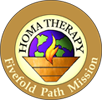Letter to Dr. Gloria Luz Guzman Mendez
ADVANCES OF RESEARCH IN FARMS WITH SYSTEMS OF PRODUCTION WITH AGRO-CATTLE COMPONENTS IN THE HIGH HUALLAGA ÁREA THROUGH INTERACTIVE INTERVIEWS.
Jorge Rios AlvaradoZootecnic Engineer, with Masters in Agro-Cattle Systems of Production, Main Professor and Dean of the Department of Zootecnia of the UNIVERSIDAD NACIONAL AGRARIA DE LA SELVA, at Tingo Maria, (Peruvian Amazon).I. INTRODUCTIONAbout 47 % of farms in the High Huallaga, have an agro-cattle component. They are the ones which produce most profit. They are not big but present better conditions due to biodiversity and the functionality of their components, which are better managed by their owners.Interactive interviews are important tools while observing dynamic agro-cattle systems, because they include detailed discussions, analysis, understanding, comparison etc., which allow to infer concretely about the objectives of the research.Among the components evaluated in the different aspects of agro-cattle farms, we found Homa therapy being practiced by some. Initially I was skeptical. However, when I continued to visit and to evaluate, I was surprised by the results observed. This fact allowed to begin to use some indicators in order to be able to evaluate scientifically, specially the cattle sector.The results concerning advancement up to date, are satisfactory, comparing farms without the therapy and those with Homa therapy, in spite of the fact that only two farms used Homa therapy, those of Mr. Juan Muñoz Pérez in Milagros (Huanuco) and Mr. Américo Pérez in Tocache, (San Martin).
II. STUDY OF FARMS WITH A CATTLE COMPONENT.
· External morphology of breeded bovine cattle (cows, bulls and calves) for meat, with good characteristics of formation of muscular masses, compared with animals in farms without HOMA therapy.· Excellent shine in the fur of animals with a good health appearance, as compared with animals without the therapy.· Weight at the time of stopping breast feeding, heavier with Homa therapy than those without the therapy and in lesser time.· Animals tend to become more docile with the therapy.· Young bulls to be made fat gained good weight (50 kilos), by eating only pasture, common salt and 2 kilos of Agnihotra ash, compared with mineral salts and pasture eatenby animals in farms without the therapy.· Pastures improve their yield and quality, this is why the weight of the animals increases.
PRODUCTIVE AND REPRODUCTIVE INDICATORS OF BREED CATTLE FOR MEAT IN THE HIGH HUALLAGA ZONE, COMPARISON OF FARMS WITH AND WITHOUT HOMA THERAPY.
VARIABLES INDICATORS WITH HOMA THERAPY
Reproductive Index (%) 88.6
Cow’s Mortality (%) 1.8
Calf’s Mortality (%) 3.5
Muscle Development (%) 16.0
Weight at Birth (kg) 35.0 – 40.0
Difficult Birth (%) 0
Placenta Retention (%) 0
Cow – calf separation (months) 5.0
INDICATORS WITHOUT HOMA THERAPY
60.0
3.5
11.5
8.7
30.0
1.5
1.0
6.0 – 7.0
INDICATORS NORMAL FOR THE ZONE
65.0
4.0
10.0
12.0
28.0
2.0
1.5
6.0
Source: The author, March 20012.1.
STUDY OF CROPS COMPONENT.With regard to the crops one could observe:· Absence of plagues and sicknesses in the crops of plantain, cocoa, citrus fruits, vegetables, in some cases with little incidence.· It improves the production and the quality of agricultural products.· The environment is notably healthier· After harvest, HOMA products have greater durability, compared with the traditional (chemical) ones.· Studies of farms with depleted soils due to the cultivation of coca, were carried out. One could notice slight improvement in the composition of the minerals of the soil, according to analysis done in the laboratory of the UNIVERSIDAD NACIONAL AGRARIA DE LA SELVA. These were an outcome of the Masters Thesis in Systems of Production carried out by myself. An evaluation was also made of the economic effect of the therapy on the farms. The results show that the best economic results were in the agro-cattle systems.
III. CONCLUSIONS1. Observations have been followed up during 1.5 years2. In spite of the fact that there were only two samples of farms applying Homa Therapy and there were several samples of farms without the therapy, the results obtained are superior in favor of Homa Therapy farms; in some cases, significantly but in other cases, with high significance.IV. RECOMMENDATIONS1. It is necessary to continue to evaluate the indicators in order to be able to validate what has been observed and to analyze them statistically through the multivariate analysis to compare variables, which will allow inferring with greater veracity the results.2. It is necessary to carry out laboratory analysis of blood, Agnihotra, soil, water, pastures, crops, etc. in order to be able to compare the therapy with those who do not use Homa Therapy.3. It is recommended to evaluate the validation of Homa Therapy through a multi- disciplinary team (agronomists, zoologists, veterinarians, nutritionists, plant pathologists, sociologists, forestry experts, etc.) for a better evaluation and analysis of the results and of the research processes.4. Broaden the evaluation with a greater number of producers who manage Homa Therapy and with a greater number of cattle and agricultural components with regards to breeding and cultivation, respectively.5. Greater inter-institutional coordination, as well as with the producers to facilitate the research.Signature and Seal
DEAN OF THE FACULTY OF ZOOTECHNICUNIVERSIDAD NACIONAL AGRARIA DE LA SELVA (UNAS)PRINCIPAL PROFESSOR T.C.D.E.-UNAS Engineer MSc. Jorge Rios Alvarado
Tingo Maria, May, 2001
Abonnieren
Kommentare zum Post (Atom)

Keine Kommentare:
Kommentar veröffentlichen